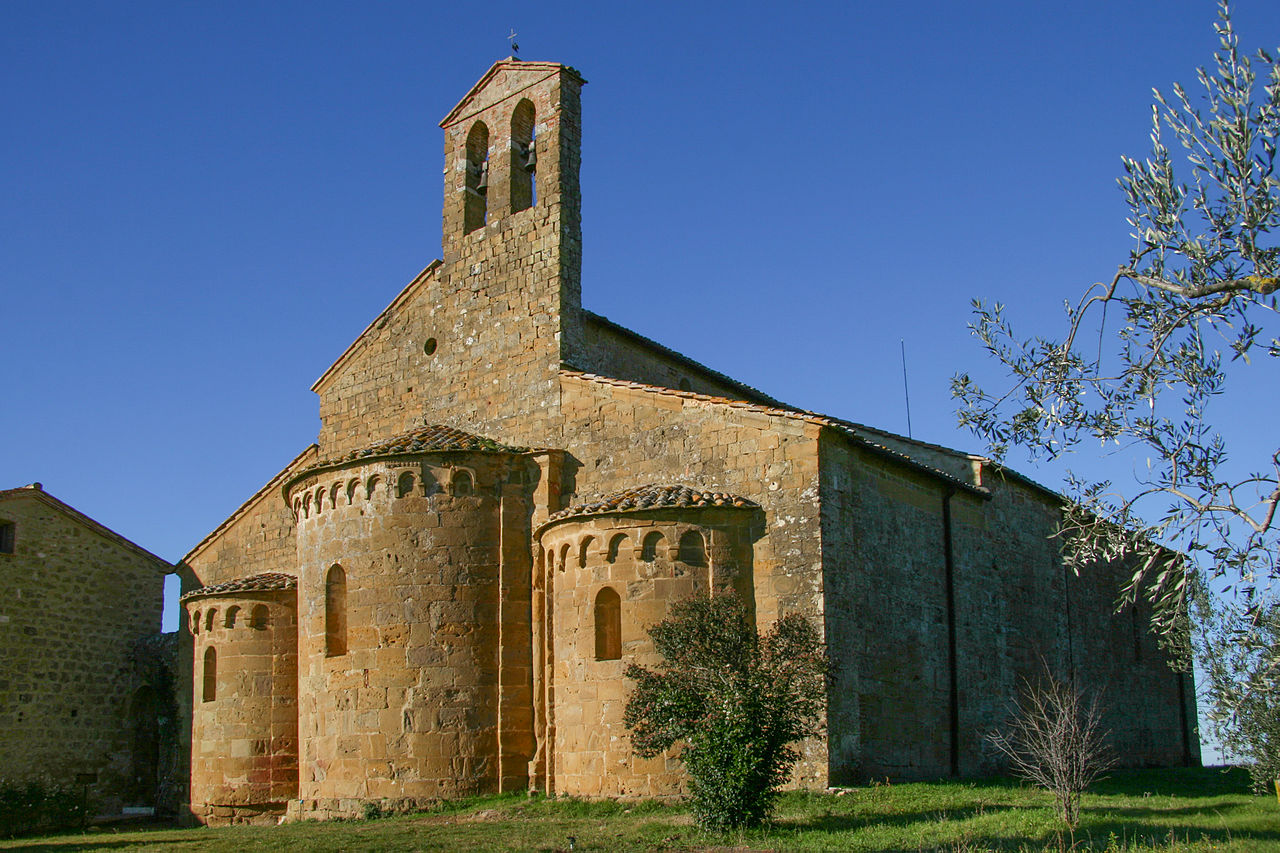Descrizione
Da Castelmuzio, una breve passeggiata porterà i più curiosi a conoscere la Pieve di Santo Stefano a Cennano. Questa straordinaria chiesa rurale, intitolata al primo martire cristiano, ha alle spalle una storia particolare. Stili differenti si mescolano all’esterno e all’interno dell’architettura: il romanico nella facciata a capanna e nelle absidi che chiudono le tre navate, il gotico del portale, il barocco nell’altare. Gli Etruschi consideravano il colle su cui sorge questa pieve un’area sacra. In epoca romana qui venne eretto un tempio pagano, probabilmente dedicato al culto di Iside o di Dioniso. Sulle sue fondamenta, nel IV secolo, fu costruita una chiesa battesimale e, dopo un lungo periodo di decadenza iniziato nel Trecento, i restauri portati avanti dal XVIII secolo in avanti hanno ripristinato la bellezza della Pieve di Santo Stefano a Cennano.
From Castelmuzio, a short walk will take the most curious ones to the Parish of St. Stefano a Cennano. This extraordinary rural church, named after the first christian martyr, has a peculiar history. Different styles are merged both in the interior as well as on the exterior of the church: the Romanesque gabled façade and apses closing the three naves, the gothic portal, the baroque altar, all coalesce in a unique architecture. The hill on which the Parish stands was sacred to the Etruscans, while in roman times a pagan temple was erected here, probably devoted to the cult of Isis or Dionysus. In the 4th century, a baptismal church was erected on its foundation, and after a long decline started in the 14th century, the restorations commenced in the 18th century succeeded in bringing back the old splendour of the Parish.
From Castelmuzio, a short walk will take the most curious ones to the Parish of St. Stefano a Cennano. This extraordinary rural church, named after the first christian martyr, has a peculiar history. Different styles are merged both in the interior as well as on the exterior of the church: the Romanesque gabled façade and apses closing the three naves, the gothic portal, the baroque altar, all coalesce in a unique architecture. The hill on which the Parish stands was sacred to the Etruscans, while in roman times a pagan temple was erected here, probably devoted to the cult of Isis or Dionysus. In the 4th century, a baptismal church was erected on its foundation, and after a long decline started in the 14th century, the restorations commenced in the 18th century succeeded in bringing back the old splendour of the Parish.

